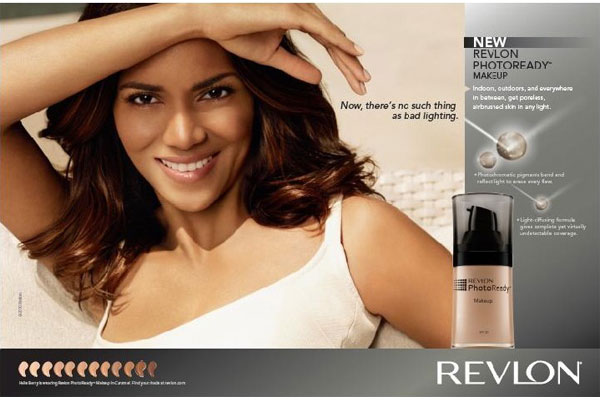In an informal content analysis that I conducted on three Glamour, three Elle and three Seventeen magazines, I found evidence to support this study that Mayo, Mayo and Mahdi conducted.
In the March 2010 issue of Glamour for example, there were 8 ads featuring minorities out which 4 featured African Americans.
One was this one featuring the famous actress Halle Berry:
The next was this one for DKNY jeans in which the black model is in the center which on a magazine falls right into the fold.
This ad for Express features the black model completely turned away from the camera and not engaged in the shot whatsoever.
The last one is for Johnson and Johnson's baby oil in which the woman is coyly wrapped up in a towel with luminous skin.
The February 2010 issue of Glamour didn't do much better in terms of content. It had two ads featuring minorities (both featuring African Americans).
One was the well-known ad featuring the tennis player Serena Williams:
While the other ad feature her again, this time with her sister Venus for low-calorie snacks.
Even when featuring celebrities, the products advertised are tampons and cookies. In the journal "Racial Stereotypes in Children's Television Commercials" by Maher, Herbst, Childs and Finn, they state that "research has documented that African Americans are often found in advertisements for snack/food products or products of low value."
The same behavior can be observed in magazines for a younger audience like Seventeen. in the October 2009 issue Serena Williams was featured in two out of five ads featuring minorites. One was this one for Nike:
and the other is a spin-off of the Tampax ad above:
This type of portrayal and ad ratio is dangerous and harmful to younger generations. Children are exposed to an average of 20,000 to 40,000 commercials every year with African American and Hispanic kids watching more TV than Caucasians. As the journal states, "children's thoughts and beliefs regarding ethnic minorities are influenced by the messages and images they see on television, both programming and advertising." Their conclusions state that "the positively stereotypes Caucasians and Asians appeared in more major roles and interacted less often with African American and Hispanic characters.....The current research documents that African Americans and Hispanics are portrayed in less important roles. Thus, it seems that children of these ethnic groups could perceive the advertising to be less credible due to the minimal use of main characters from their own ethnic background."







No comments:
Post a Comment